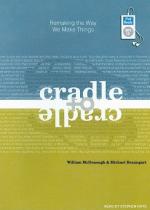
|
| Name: _________________________ | Period: ___________________ |
This test consists of 15 multiple choice questions and 5 short answer questions.
Multiple Choice Questions
1. What material is the book itself made of?
(a) Rice paper.
(b) Recycled milk cartons.
(c) Recycled paper.
(d) An easily recyclable polymer, not paper.
2. Which of the following can pass into drinking water?
(a) Pieces of glass.
(b) Medications.
(c) Solid waste.
(d) Plastics.
3. The authors present the cherry tree as a good model of what?
(a) Eco-efficiency.
(b) Cradle to cradle design.
(c) Cradle to grave design.
(d) Crude product design.
4. What do the authors suggest in terms of location and size of power plants?
(a) Larger, more efficient plants.
(b) Power plants that burn natural resources.
(c) Smaller, more local plants.
(d) No power plants.
5. Which is an example of a product that is difficult to recycle?
(a) Plastic bottles.
(b) Carpet.
(c) Glass baby food jars.
(d) Lunch bags.
6. What is inefficient about most roofs?
(a) They collapse frequently.
(b) The material washes away with rain.
(c) They do not insulate the house very well.
(d) The material is easily replaced.
7. Which of the following statements best describes the authors' point of view?
(a) The world has unlimited resources.
(b) It is a world of production and efficiency.
(c) It is a world of abundance, not limits.
(d) The world is ours for the taking.
8. Which of the following is an example of how the natural world replenishes itself?
(a) Monoculture crops.
(b) Caribou migrations.
(c) Catching fish with nets.
(d) Cherry blossoms falling from the tree.
9. By what percent has Egypt´s food crops decreased?
(a) 50%.
(b) 5%.
(c) 1%.
(d) 20%.
10. Which word best describes the cherry tree model for industrial design?
(a) Cheap.
(b) Efficient.
(c) Nurturing.
(d) Practical.
11. What do some people make with old tires in Africa?
(a) More tires.
(b) Plastic bottle for export.
(c) Traditional medicines.
(d) Sandals.
12. How are most manufacturing processes different than the way ants live in the environment?
(a) Most manufacturing replaces the resources it depletes.
(b) Most manufacturing produces biodegradable chemicals.
(c) Most manufacturing is concerned with productivity.
(d) Most manufacturing creates waste that is not useful in the environment.
13. What happens to nutrients when agriculture becomes industrialized?
(a) Nutrients are never consumed.
(b) Nutrients are efficiently recycled.
(c) Nutrients are moved and do not remain local.
(d) Nutrients are replenished naturally in the soil.
14. What is inspiring about cherry trees to the authors?
(a) They reduce the amount of oxygen in the environment.
(b) They are wasteful.
(c) They are beautiful and productive at the same time.
(d) They do not need many resources to live.
15. How has leather been tanned in the last forty years?
(a) With chromium tanners.
(b) With salt tanners.
(c) With plastic resins.
(d) With vegetable tanners.
Short Answer Questions
1. What is true about the inks typically used for printing books?
2. In the authors' opinion, what should factories do?
3. All of the following are true about a typical book except:
4. What do the authors claim about the preferences of consumers?
5. Which product is an example of a monstrous hybrid, as the authors describe it?
|
This section contains 566 words (approx. 2 pages at 300 words per page) |

|




